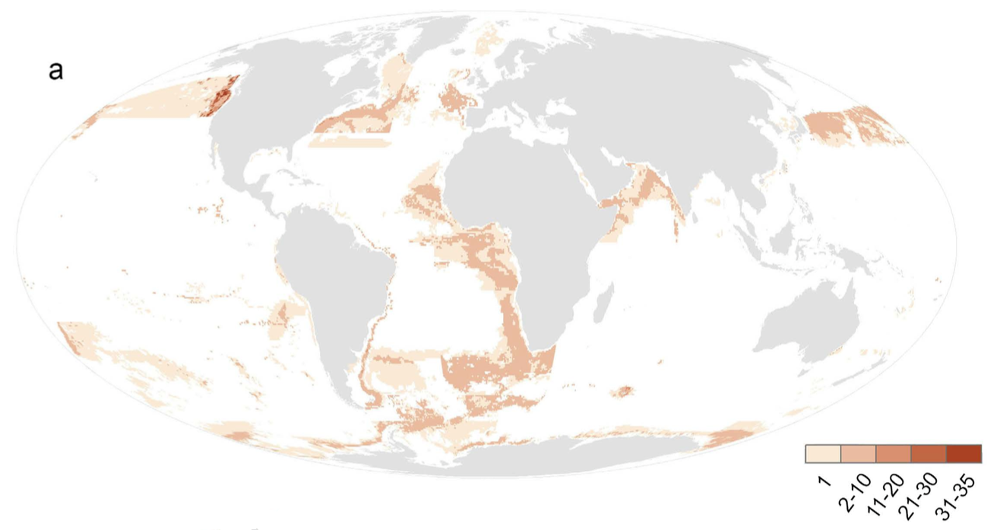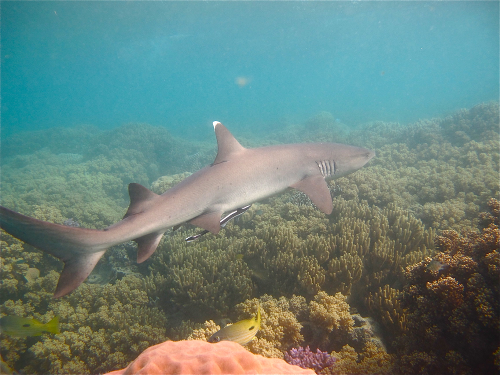Are more marine protected areas needed to protect ocean biodiversity?
Marine protected areas are a primary tool for conserving marine ecosystems, habitats and species. For instance, the Convention on Biological Diversity, has 193 signatory nations committing to protecting more than 10% of marine environments by 2020. We have recently shown that there are a large number of species that are not protected or inadequately protected in the global protected area system. These ‘gaps’ will be challenging to fill by 2020.

Density map of species not receiving any protection from protected areas, according to our recent analysis
New marine reserves are always contentious. Marine reserves are areas closed to fishing to protect native plants and animals, so protection often comes at a cost to local fishing industries who will be excluded from fishing in some places. For instance, Australia’s Great Barrier Reef Marine Protected Area was rezoned in 2004 to have 33.3% of its area as no fishing zones. The process was highly contentious and cost the Federal Government ~$250 million in compensation pay-outs to fisheries. Clearly, balancing the needs of conservation with its impacts on fisheries is important for both people and economies.

Conserving ecosystems, like this coral reef, sustaining productive fisheries and restoring depleted fisheries are all potentially competing objectives.
Our recently analysis makes a start at quantifying the shortfall in conservation, but does not consider the cost of meeting that shortfall for economies, society and industries, such as fisheries. Balancing multiple ecological and societal objectives is tricky. Doing it properly requires government and stakeholders to be clear about the objectives of management and then applying the right management tools to achieve those objectives.
Marine protected areas are one tool for balanced management, but not the only tool. In many cases, sustainable management of fisheries may do a better job at both protecting ecosystems, while still allowing profitable fisheries to operate. The reason being that marine reserves on their own (without buy-backs to reduce the number of boats) squeeze fishers into a smaller operating space, and thus, can actually increase the impact of fishing on marine ecosystems.
In some cases marine protected areas will be the best tool balancing ecosystem objectives with fisheries. For instance, they may often be easier to enforce than catch limits. Hence their popularity as a management tool in many community based initiatives.
Clearly marine ecosystems are under-protected globally. But in meeting the shortfall we need to be careful that we choose the right tools and consider the costs of conservation to people. In choosing the right tools, we can help to avoid contentious debates on protection. In the long-run protecting ecosystems is not only good for biodiversity, but it can help sustain fisheries too.
Further reading
Get the pdf
Brown CJ, Mumby PJ. Trade‐offs between fisheries and the conservation of ecosystem function are defined by management strategy. Frontiers in Ecology and the Environment. 2014 Aug 1;12(6):324-9.
Klein CJ, Brown CJ, Halpern BS, Segan DB, McGowan J, Beger M, Watson JE. Shortfalls in the global protected area network at representing marine biodiversity. Scientific reports. 2015;5.
Macintosh A, Bonyhady T, Wilkinson D. Dealing with interests displaced by marine protected areas: a case study on the Great Barrier Reef Marine Park Structural Adjustment Package. Ocean & Coastal Management. 2010 Sep 30;53(9):581-8.